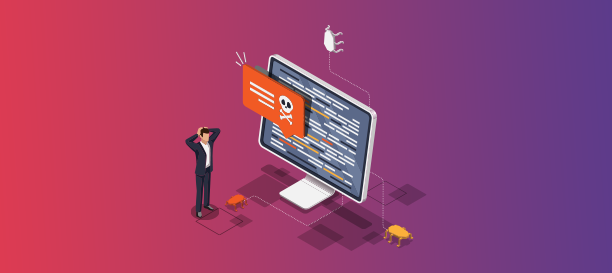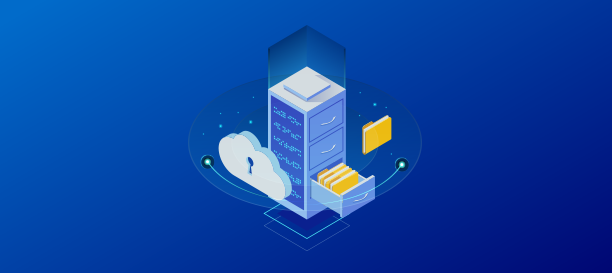Test post
Sample post 123 https://msp.amp.vg/web/b3lnnugwrzu7c
Sample post 123 https://msp.amp.vg/web/b3lnnugwrzu7c

Has it ever happened to you that you opened the web browser on your PC and it looked a bit off? Then you perhaps did a Google search for something or tried to access your email only to have a dozen ads popping up or to be redirected to some other URL. Well, it means your web browser was hijacked. Browser hijacking is one of the most common cyber crimes out there today.
Browser hijacking is when a malware enters your system and takes control of your browser. It then makes changes to your browser settings and while it seems innocuous, the consequences can be serious. Your browser is the gateway to the internet. By hijacking your browser, the malware will be able to steal your data including private information, log-in credentials and more.
Browser hijacking malwares can enter your system in various ways. Generally, they gain an entry when you click on a malicious link or accidentally download the malware onto your computer.
When your browser is hijacked, you will notice that most probably, your homepage setting would’ve changed. Your default search engine may have been changed too, and when you click on links, multiple, unrelated pages will open up. You will also notice that you are bombarded with pop-up ads and are barely able to navigate the web. You may also find new add-ons or toolbars installed on your browser automatically.
Installing a good anti-malware software program is one way to protect your browser from being hijacked. Firewalls can also help, as they will restrict access to suspicious sites. Apart from installing firewalls and anti-malware, you also need to follow basic cybersecurity best practices such as not opening suspicious emails, not downloading attachments without scanning them with the antivirus software on your computer, not installing any software program unless you are 100% sure of its authenticity and also, by being vigilant when it comes to links in emails or the web, in general. Remember, a simple browser hijacking seems more like a nuisance than a big threat to your data security, but it could turn out to be much more than that.

When someone new joins your organization, how do you manage their onboarding? Chances are, you already have processes in place for everything. The employee paperwork is taken care of by the HR, the on-floor assistance and other training is probably provided by a senior team member or the training and development team, and your IT team or MSP handles their IT/computer setup. But, what happens when they are leaving the organization. Is your off-boarding process just as meticulous?
Businesses pay a lot of attention to data safety and security when employees are handling their data, but often overlook the same when it comes to outgoing employees. But, outgoing employees can be a threat to your organization’s data security.You never know when a disgruntled employee may actually go out of their way to intentionally harm your business by stealing (and later misusing or selling) or destroying your data. Even if an employee is parting ways with your company on good terms, and you trust them, there’s still a need to ensure your data security is not compromised at the time of their off-boarding. Some ways to do this are
You need to implement the above mentioned steps to ensure your data stays safe irrespective of who leaves your organization. While some may argue that it may seem like not trusting their own employees, it is essential. At the end of the day, when it comes to data security and safety, you can’t leave anything to chance, because the stakes are far too high. A single data leak or misuse may cost you a lot–not just in terms of penalties, lawsuit settlements and fines, but also your brand image and customers.

As we know, the Coronavirus pandemic has brought about a paradigm shift in the way businesses function. Home is now, ‘The Office’. With WFH taking root, companies and employees alike are experiencing so many benefits that it looks like it is here to stay. This has given a boost to various technologies that enable businesses to operate smoothly in the WFH environment. Examples include video conferencing applications such as Zoom, Microsoft Teams, Google Meet, Cloud data storage options, VoIP, etc., In this blog, we discuss one such technology, Virtual Private Networks, more commonly known as VPN.
A VPN or virtual private network is a mechanism to connect to private IT networks using the internet. This gives you the ability to access private networks remotely, yet safely. Thus VPNs play a key role in the remote operations model. Using remote access VPN, employees can access their ‘work computers’ using the remote desktop mechanism. Plus, using VPNs to access data adds an additional layer of security. Here’s how-
VPNs need not be limited for work purposes alone. As you can see, considering the various benefits discussed above, it makes sense to use a VPN when online for personal purposes. Especially if you are using a public network such as the WiFi network at airports, malls, coffee shops, etc. Also, since home networks are less secure compared to business networks, it is a good idea to use VPN when performing activities that may involve financial transactions such as online banking, insurance renewals, or even when shopping online. (Your credit card details could be stolen as you are busy purchasing that pair of shoes on sale!)
A word of caution, though. There are many VPN services available in the market, and a lot of free ones too. While some are genuine, there have been cases where cyber criminals have masked a malware to seem like a VPN application and used it to steal sensitive information. So, make sure you do your research before downloading a ‘Free VPN’ application for personal use. If you are a business owner, then you should absolutely opt for a paid, trusted VPN service. Your MSP will be able to recommend one that’s right for you.

We all know how annoying it can be when you get a pop-up asking if you’d like to update it or worse still, your system starts to update itself. The general tendency is to put it off until the next time you log onto your device, when you put it off again. We have all experienced it at some point or another, when we are on that important call or have to reply to an urgent email and decide a system update is just not worth the time. But, did you know that it is important to update your computer’s operating system in a timely manner? And that’s not just for your computer, the same applies to your mobile phones, iPads and other tablets too. In fact, there are updates for various software programs and apps that should be installed too.
System and application vendors such as Microsoft, Apple, Adobe, etc., release security updates and patches almost every month, and sometimes, several times during a month.
Safety and security of your data
Cybercriminals are constantly on the lookout to exploit any weakness that software programs may have, to gain entry into your IT network or system. Vendors, on the other hand, have teams that are constantly on the lookout for such weaknesses and work on developing security patches that plug these gaps, so your device/network remains safe and secure. Skipping system/software updates can make you vulnerable to cyber attacks and compromise on the safety and security of your data.
Ensures your device is working at its best
Apart from the security patches, there may also be bug-fixes and enhancements that may be released as a part of the software/system update. Not installing bug-fixes and enhancements means your device won’t be performing at its optimal level and may crash or slow things down. It may also result in compatibility issues when it comes to other programs or applications.
As a business it can be difficult to keep up with software updates, security patches and upgrades, and implement it across your entire organization. Having a service level agreement with an MSP will ensure that all your business devices are updated, patched and secure.

With the pandemic still raging in most parts of the world, cybercriminals have come up with yet another novel technique to lure unsuspecting victims and steal their data–the free Covid-19Vaccine scam. This is how it typically works.
You get an email or a text message that says you are eligible to receive the vaccine for Covid-19 free of cost. The message will have a link which will take you to a form, where you may be asked for your personal information. Once you fill that in and hit submit, cybercriminals have access to your PII (Personally identifiable information) and can virtually wreck havoc now.
There have been some variations of this message, one being a rebate offer, where you are asked to “book” or “preorder” your vaccine by paying for it online, with a promise of credit/rebate/refund in a week. Not only will your card be charged for the “cost of the vaccine”, your card details may also be stolen using secret key loggers, and the damage to your credit may be much more than the amount you were actually billed for.
So, if the scam seems to target individuals, why is it important for businesses to be aware of this? Well, for the simple reason that you need to alert your employees to this. With the pandemic having almost completely changed the typical office set up and more and more people working remotely, using their own devices for work purposes, there’s a chance that an employee who falls for the vaccine scam may end up compromising your company’s data unknowingly. If a cybercriminal gets access to their device, chances are high that they will most likely have a gateway to your IT network and subsequently, your data.
Data safety is not just about getting the best antivirus software, it is also about people who have access to your data. Apart from installing anti-malware software programs and firewalls, educate your employees about the COVID-19 vaccine scams that are in play. Help them identify phishing scams and conduct mock drills and tests to assess their understanding of the concept.
No time to do all this by yourself? Nomad Technology Group is an experienced Managed service provider with extensive experience in cybersecurity. We can help you keep your data safe by deploying the latest technology and also by training your employees to identify hacking and phishing attempts BEFORE they become a victim.

As a business you know the importance of ensuring that your data is safe from the prying eyes of cyber criminals. While anti malware software programs and firewalls are essential to doing this, another important element is, training your employees to identify the traps laid by cyber criminals. This blog offers a list of what you should cover in cybersecurity awareness training.
This should be number one on your list. The easiest way to steal your data is by stealing your password. Hence you should educate your employees on password best practices. They should know
You could also invest in a password tool as it will help you enforce your password policy better.
Train your employees to identify phishing attempts. Phishing is when cyber criminals pose as someone trustworthy and attempt to steal data. Studies show that the number one reason businesses become victims of cybercrime is because their employees fail to recognize a phishing attempt. For example an email may be disguised to look as though it came from a coworker or vendor, or even a government agency such as the IRS, and may contain a request for sensitive information. Some may have attachments that the receiver may open unknowingly and end up infecting the whole network with malware. Though anti-malware software programs generally identify such communication and either mark them as spam or issue warnings when the receiver tries to open them or download the attachment, training your employees to recognize phishing attempts is very important, because even a single email that slips through the crack can result in a huge disaster.
Remember this is not a one-time thing. Cybercriminals are always at work devising new strategies to steal your data. You need to train new employees as they join your organization and update your existing employees with any new cybercrime modus operandi. You can offload this task to an experienced managed service provider who specializes in cyber security. Being a part of the industry, they would generally be up-to-date with the latest risks and advise you and your team accordingly.

Pandemic or no pandemic–cyber insurance is a must-have. And, not just that, some of your clients may insist that you have cyber insurance coverage before they trust you with their data–especially if you are operating in the B2B market. Cyber insurance can break the fall in case you become the victim of a cyber attack or some gross malfunction that causes data loss. Here’s a list of things cyber insurance policies typically cover.
After a cybersecurity attack, you need to conduct a root cause analysis to identify what went wrong and where, so you can take corrective action to prevent the possibility of it repeating.
Along with data breaches come a lot of liabilities including timely notification, fines, penalties, and perhaps even lawsuits for which you will need legal representation.
If your business is a victim of cybercrime, you will likely have to shut down your IT infrastructure for some time even as the issue is being resolved or contained. This downtime can cost you quite a bit in terms of lost sales and also employee productivity. Not to mention the damage to your business’s brand name which will have some effect on your sales revenue for at least a few months to come–and add to that the costs of employing a good PR agency to create some positive buzz around your brand to overcome the bitter taste left by the data breach incident.
Apart from the items covered above, which is more like a consequence of data loss, there are two big risks that cyber insurance policy can protect you against–cyber extortion and fund diversion.
Remember the WannaCry Ransomware incident that happened in 2017? Cybercriminals used a worm, a form of malware to infiltrate more than 200,000 target computers and freeze user’s access to the data therein. The losses caused by WannaCry are estimated to be in the range of billions of dollars. What would you do if someone held your data hostage or worse still threatened to leak it online? As a business owner, you have no choice but to pay up the ransom amount.
This is another form of cyber attack, though not as obvious as cyber extortion. Fund diversion is when you or your staff accidentally end up diverting your business funds to a fraudster. For example, your accountant clicked on a phishing link that took them to a clone site of the bank where your company has its account, or they made a payment by clicking on a fraudulent email sent by a cybercriminal posing to be your vendor.
It is important to remember that cyber insurance is still NOT a replacement for cybersecurity. You cannot invest in a cyber insurance policy and not bother about putting data security measures in place. In fact, like any other insurance, cyber insurance will also have exclusions and any laxity on your part in terms of data security can cause your cover to become null and void. This is where a trusted managed services provider can be of help. An experienced MSP can help you pick the right cyber insurance policy based on your needs. They will be able to explain the exclusions clearly to you–in your terms and help you design and maintain the security mechanisms and processes necessitated by the cyber insurance policy.

The WFH model makes businesses much more vulnerable and easy targets for cybercriminals. Some of the reasons include
Businesses can overcome this challenge through a combination of tools and actions such as
However, these measures are no guarantee that nothing will ever go wrong! When you lose data accidentally or, when your data is compromised or held ransom, your first thought would be to get access to your data and get your business back on its feet. Yes, you will want to call in for a trusted IT services provider to put your business back on track quickly. But, it is not that simple. If you don’t have a service level agreement with an IT service provider, it may be difficult to find one instantly and also, challenging to find someone who you can trust with your situation. Even if you do find someone, chances are, they will charge you exorbitant rates by the hour.
Cyber insurance typically covers direct and indirect costs arising from cybersecurity incidents. One malicious attachment could bring the whole IT infrastructure crashing down. And, if there’s a data breach where confidential information has been compromised, then you’d be looking at hefty compensation payouts. That is why you need cyber insurance. Cyber insurance is not something new, but it has never been so important as it is now.

WFH opens up whole new horizons in terms of flexibility, productivity, and cost savings. But, it also opens your business up a little more to cybercriminals, as you can’t have a hands-on approach to cybersecurity, especially if your employees are using their own devices for work. This blog discusses some mechanisms that you can use to mitigate the risks of becoming a victim of cybercrime in the WFH setup.
Instead of using a single password for data access, multi-factor authentication adds more layers to security. If WFH has your employees accessing their work computers remotely, then you simply cannot skip multifactor authentication. Multi-factor authentication works by confirming the identity of the user across 3 areas
While the 3rd kind of authentication (who they are) may not be easy to implement in a WFH scenario, you can still use multi-factor authentication to include the first 2 options.
Using the Cloud to store your files presents a lot of advantages in the WFH environment. It certainly saves time and effort as files don’t have to be mailed back and forth, eliminates version control challenges, and ensures timely access to data. But, did you know that you can also leverage the Cloud to thwart security threats presented by the WFH scenario? The Cloud lets your employees work safely from anywhere and offers more safety than local data storage mechanisms. Any data in the Cloud is encrypted, which means it is not that easy to access confidential information as it would be when someone hacks a PC. Plus, the chances of data loss are almost zero. Unlike your employees storing work files on their computer, which can be lost or misused if their device malfunctions or is stolen or hacked into, any data put on the Cloud stays there.
Did you know that lack of knowledge is one of the major reasons behind companies and individuals becoming victims of cybercrime? All it takes is one wrong click to open the floodgates, and the only way to stop that from happening is to train your employees on cybersecurity best practices. Training will not only provide them with a clear set of do’s and don’ts but also help them identify situations where they may be a possible target. Training on cybersecurity best practices can cover a wide range of topics, but here are a few that should not be missedPassword hygiene
You can also conduct mock drills and check who grasped these concepts right and who needs further training.
An experienced MSP can help you overcome the cybersecurity challenges propelled by the WFH scenario. They can put your mind at ease by taking care of everything–from anti-malware solutions to employee training, and beyond.
